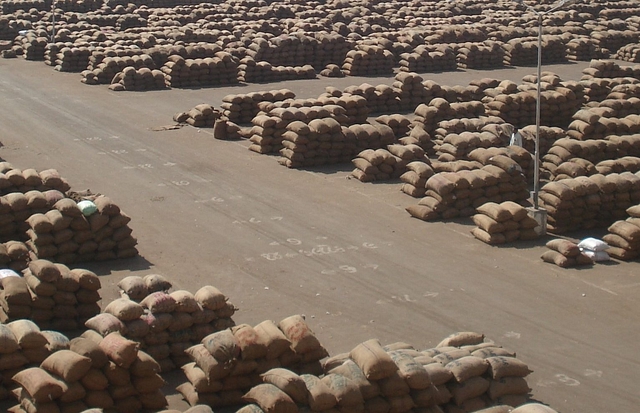
Why States Should Give Up Some Of Their Cess To Help Centre Procure Foodgrain
Here is why the Centre should ask the states to forego their revenue on mandi and development levies on procurement of foodgrains for buffer stocks.
The Union government has fixed a wheat procurement target of 35.7 million tonnes (mt) for the rabi marketing season starting April. The procurement target is against purchase of 35.8 mt of wheat last year. The procurement target was 32 mt in 2018.
The higher procurement target comes close on the heels of projection of a record production of over 100 mt of wheat this crop year (July 2018-June 2019).
The Centre procures wheat and rice to build stocks to face any food emergency in the country. It is also a mechanism that ensures farmers get the minimum support price (MSP) for the wheat and rice they grow.
This year, the government has fixed the MSP for wheat at Rs 1,840 per quintal. The MSP for rice, fixed during kharif sowing, is Rs 1,750 a quintal.
A record crop means that domestic prices could be under pressure and the Centre could be flooded with wheat stocks from farmers wanting to get the best price. But things may not turn out to be that way.
The International Grains Council (IGC) has projected a lower global wheat crop of 737.3 mt this season ending in July against 767.4 mt last season. It has projected end stocks at 262.7 mt against 270.2 mt last year.
The US Department of Agriculture, on the other hand, estimates the global wheat crop at 733.4 mt and the Food and Agriculture Organization (FAO) at 728.4. All projections show a lower crop and a resultant lower ending stocks.
The projection has resulted in IGC wheat sub-index gaining eight per cent year-on-year at 194. Though wheat prices have tended to drop of late, the market can turn bullish once the US settles its trade dispute with China, which could then turn out to be a big buyer.
The Centre’s decision has to be viewed in the background of the stocks it holds in its warehouses. According to the Food Corporation of India (FCI), the government agency that procures foodgrains, stores and transports them, wheat stocks in its warehouses were 23.93 mt. In addition, the agency had 22.8 mt tonnes of rice and 26.68 mt of unmilled paddy.
The total foodgrain stocks excluding unmilled paddy was 46.72 mt against a requirement to hold 16.41 mt of foodgrain stocks — 10.8 mt of wheat and 5.61 mt rice. Besides, the government needs to have a strategic reserve of 2 mt of rice and 3 mt rice.
The current stock position shows that the government is well off with the warehouses bulging with stocks, more than double the mandatory requirement.
This leads to the question: why has the government set a higher procurement target? One obvious reason is that probably, facing elections, it cannot afford to see wheat prices ruling lower, particularly when there is a projection of a record crop.
At Rs 1,840 a quintal, the Centre and its agencies will have to spend over Rs 68,800 crore for meeting the procurement target of 35.7 million tonnes. This is just the basic cost.
In addition, the government will have to spend on transportation of wheat from the procurement centre to other places and regions; and also pay levies such as mandi fees, development cess and labour charges. This could be in the region of Rs 10,000 crore.
The Centre may not be able to go slow on the wheat procurement once the farm produce begins hitting the markets, in view of elections ahead.
The Centre, however, can ask the states to give up mandi and development cess that help it save over Rs 5,000 crore. When the goods and services tax system was formulated, the Law Ministry was of the view that mandi taxes and other cess such as for development can stay.
The Centre spends some 15 per cent as additional costs over and above costs for procurement of foodgrains. These costs are incurred in paying various levies by the states, which they should give up since the Centre is helping them with foodgrain procurement.
If not now, then probably from next year onwards, the Centre should ask the states to forego their revenue on mandi and development levies on procurement of foodgrains for buffer stocks.
After all, the Centre is buying foodgrains to avoid any problem in case food emergency like famine and floods, and ensuring farmers get better remuneration for their produce.